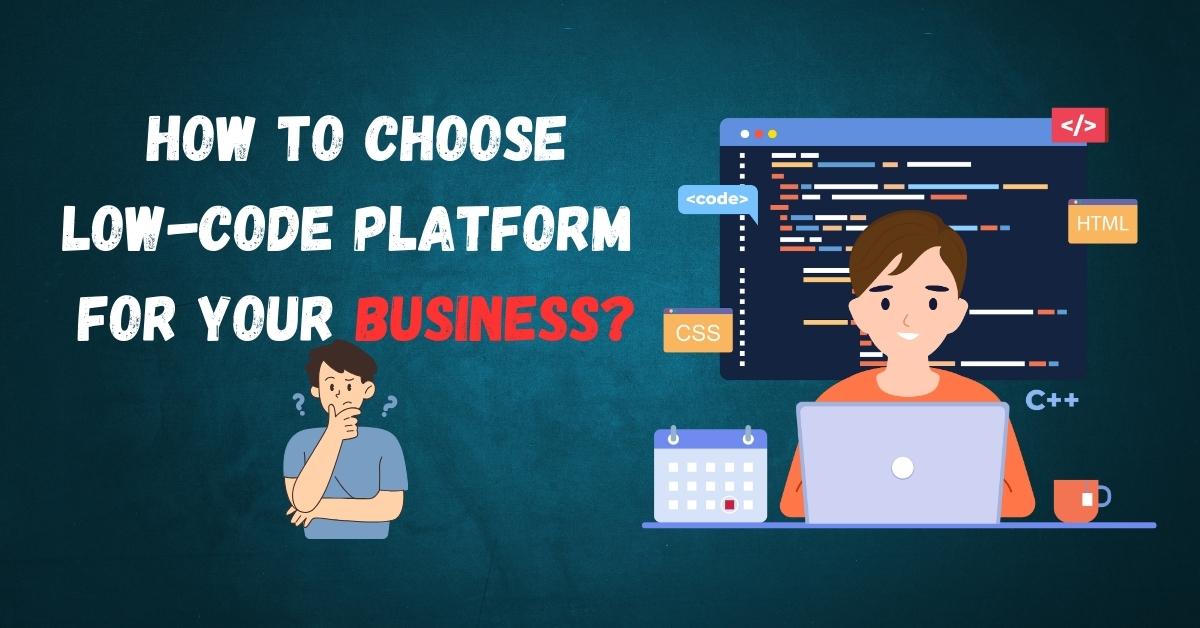Choosing the right low-code platform for your business can be confusing with so many options available. It’s important to understand what low-code platforms are and how they can help your organization. This article will guide you through the key factors to consider when selecting a low-code platform that fits your needs, ensuring you make a smart decision for your business’s future.
Key Takeaways
- Identify your specific business needs before choosing a platform.
- Look for user-friendly interfaces that everyone can use easily.
- Ensure the platform can work well with your existing tools.
- Set clear goals to measure the success of the platform you choose.
- Consider the costs and potential return on investment.
What is a Low-Code Platform?
A low-code platform is a tool that allows you to create software applications with very little coding. Instead of writing every line of code, you can use a visual interface to drag and drop elements, similar to building with Lego blocks. This makes it much faster to develop apps, even for those who may not be experts in coding.
Key Factors in Choosing a Low-Code Platform
When selecting a low-code platform, consider the following factors:
- User-Friendliness: The platform should be easy to navigate for both tech-savvy and non-tech users.
- Integration Options: Ensure it can connect with other tools and services your business uses.
- Scalability: The platform should grow with your business needs.
Understanding Your Business Needs
Before choosing a platform, it’s important to understand what your business specifically requires. Ask yourself:
- What type of applications do we need?
- Who will be using these applications?
- What existing systems need to be integrated?
Low-Code vs. No-Code Platforms
While both low-code and no-code platforms aim to simplify app development, they cater to different users:
- Low-Code: Requires some coding knowledge, suitable for developers.
- No-Code: Designed for non-technical users, allowing them to create apps without any coding.
Industry-Specific Needs
Different industries may have unique requirements. For example:
- Healthcare: Needs strict compliance and security features.
- Retail: Requires fast deployment for customer-facing apps.
- Finance: Focuses on data integrity and security.
Understanding the features and capabilities of low-code platforms is essential for making an informed choice that aligns with your business goals.
Essential Features to Look For
When selecting a low-code platform, it’s important to consider several key features that can significantly impact your business’s success. Choosing the right platform can enhance your team’s productivity and creativity.
Integration Capabilities
- Ensure the platform can connect with your existing software and systems.
- Look for ready-made connectors to databases and services.
- A strong integration feature helps maintain a smooth digital environment.
Security & Compliance
- Security is crucial; choose a platform with robust security features.
- Look for options like data encryption and user permissions.
- Compliance with industry standards is essential to protect sensitive information.
Assessing Cost and ROI
- Evaluate the total cost of ownership, including hidden fees.
- Consider the potential return on investment from increased efficiency.
- Compare costs against the features offered to find the best value.
Future Trends in Low-Code Development
- Stay updated on emerging trends like AI integration and automation.
- Consider platforms that adapt to changing technology landscapes.
- Look for features that support scalability as your business grows.
Choosing a low-code platform is not just about current needs; it’s about future-proofing your business for growth and innovation.
Final Thoughts on Choosing a Low-Code Platform
Choosing the right low-code platform is an important choice that can really affect how well your software projects do. By picking the right tool, you can save time, cut costs, and work more efficiently. Remember to think about what your business needs, who will use the platform, and how it fits with your current tools. Take your time to research and compare different options. In the end, the right low-code platform will help your team create better applications faster, making your business more successful.
Frequently Asked Questions
What is a low-code platform?
A low-code platform is a tool that allows people to create software applications with little coding. It uses visual interfaces and pre-made components to make the process easier.
Why should I choose a low-code platform?
Low-code platforms help speed up the development of applications. They allow both experienced developers and beginners to build apps quickly without needing to write a lot of code.
What are the main features to look for in a low-code platform?
Key features include ease of use, integration with other tools, security measures, and the ability to customize applications to fit your needs.
How do low-code platforms differ from no-code platforms?
Low-code platforms require some coding skills and allow for more customization, while no-code platforms are designed for users with no coding experience and have limited flexibility.
Can anyone use a low-code platform?
Yes, low-code platforms are designed for both technical and non-technical users. They enable business users to create applications without needing extensive programming knowledge.
What should I consider before choosing a low-code platform?
Think about your specific needs, who will use the platform, how it will fit with your existing tools, and what results you want to achieve.




